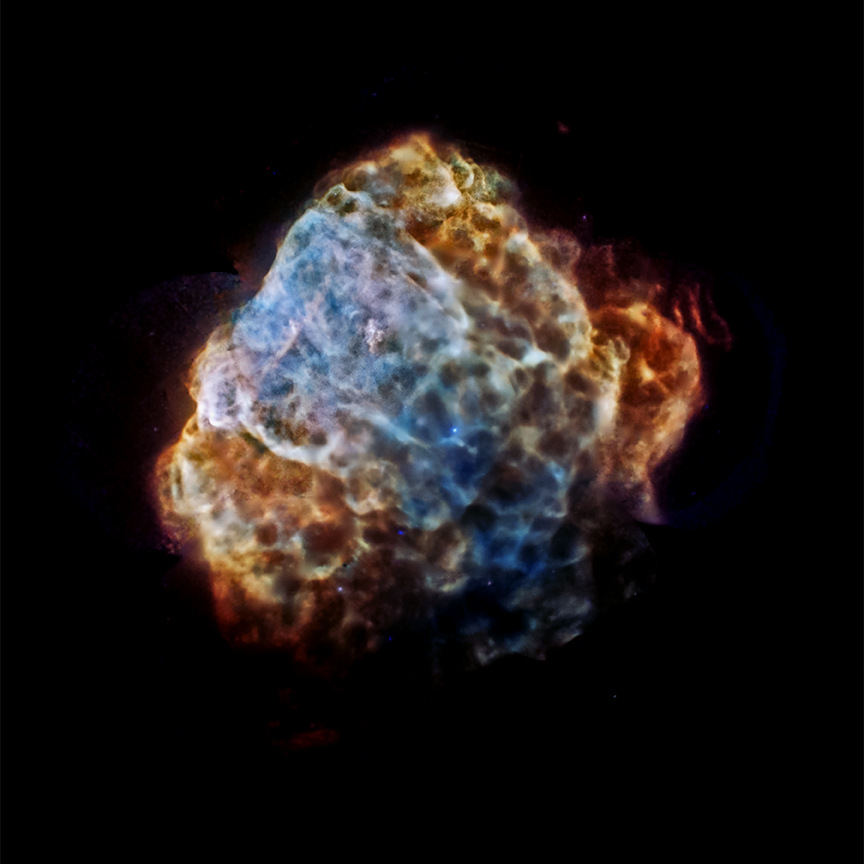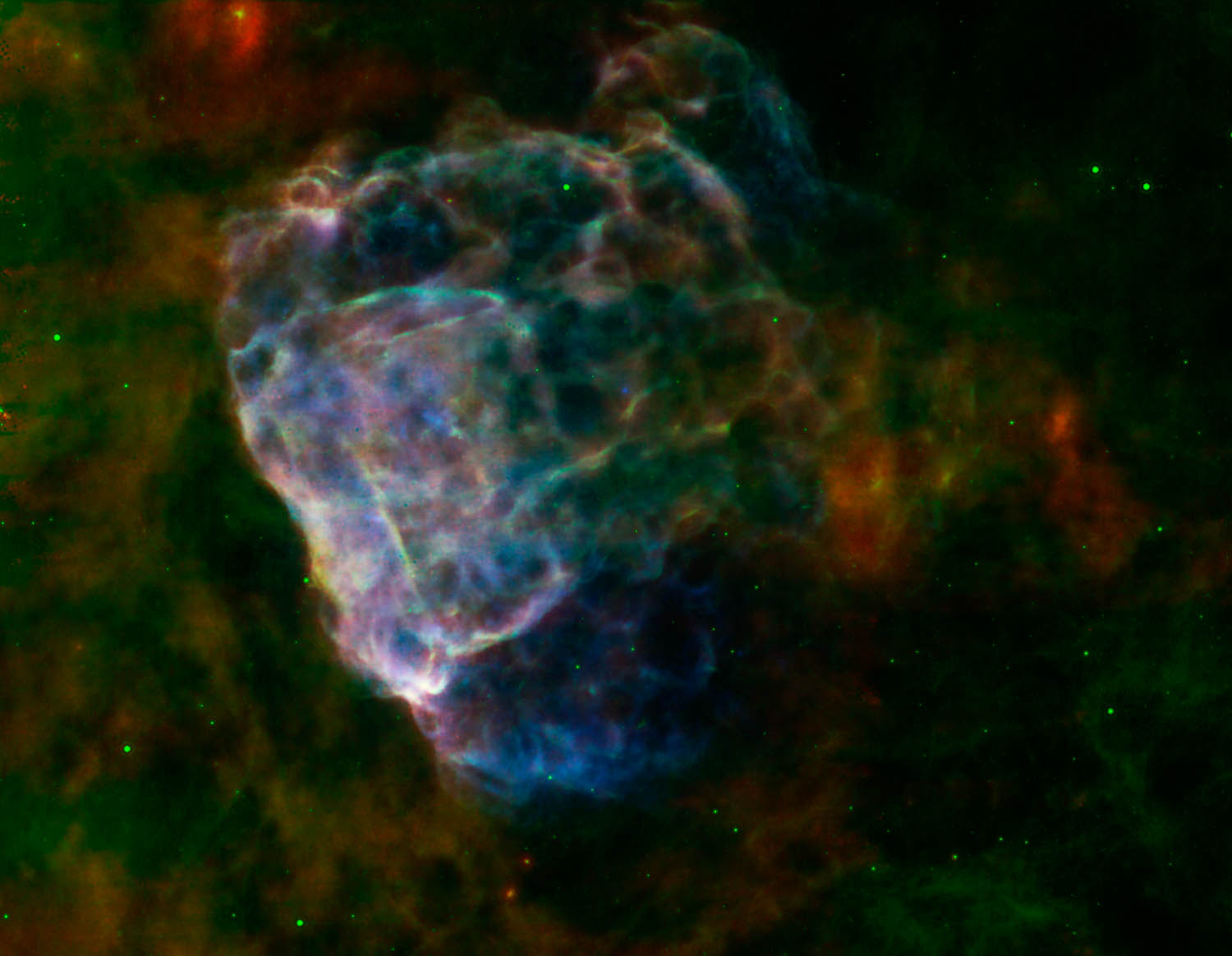NASA | MSFC | SAO | CXC | 2014 Sep 10
The destructive results of a powerful supernova explosion reveal themselves in a delicate tapestry of X-ray light, as seen in this image from NASA's Chandra X-Ray Observatory and the European Space Agency's XMM-Newton.
The image shows the remains of a supernova that would have been witnessed on Earth about 3,700 years ago. The remnant is called Puppis A, and is around 7,000 light years away and about 10 light years across. This image provides the most complete and detailed X-ray view of Puppis A ever obtained, made by combining a mosaic of different Chandra and XMM-Newton observations. Low-energy X-rays are shown in red, medium-energy X-rays are in green and high energy X-rays are colored blue.
These observations act as a probe of the gas surrounding Puppis A, known as the interstellar medium. The complex appearance of the remnant shows that Puppis A is expanding into an interstellar medium that probably has a knotty structure.
Supernova explosions forge the heavy elements that can provide the raw material from which future generations of stars and planets will form. Studying how supernova remnants expand into the galaxy and interact with other material provides critical clues into our own origins. ...
Supernova Seen In Two Lights
NASA | JPL-Caltech | Spitzer | 2014 Aug 21
The destructive results of a mighty supernova explosion reveal themselves in a delicate blend of infrared and X-ray light, as seen in this image from NASAs Spitzer Space Telescope and Chandra X-Ray Observatory, and the European Space Agency's XMM-Newton.
The bubbly cloud is an irregular shock wave, generated by a supernova that would have been witnessed on Earth 3,700 years ago. The remnant itself, called Puppis A, is around 7,000 light-years away, and the shock wave is about 10 light-years across.
The pastel hues in this image reveal that the infrared and X-ray structures trace each other closely. Warm dust particles are responsible for most of the infrared light wavelengths, assigned red and green colors in this view. Material heated by the supernovas shock wave emits X-rays, which are colored blue. Regions where the infrared and X-ray emissions blend together take on brighter, more pastel tones.
The shock wave appears to light up as it slams into surrounding clouds of dust and gas that fill the interstellar space in this region.
From the infrared glow, astronomers have found a total quantity of dust in the region equal to about a quarter of the mass of our sun. Data collected from Spitzers infrared spectrograph reveal how the shock wave is breaking apart the fragile dust grains that fill the surrounding space. ...
The most complete and detailed X-ray view of the SNR Puppis A - G. Dubner et al
- Astronomy and Astrophysics 555 A9 (July 2013) DOI: 10.1051/0004-6361/201321401
arXiv.org > astro-ph > arXiv:1305.1275 > 06 May 2013

